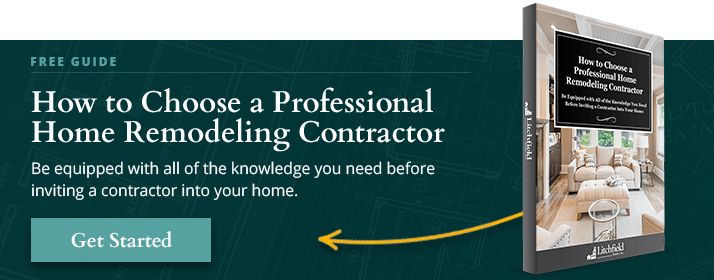The benefits of open floor plans in home renovation
Years ago, rooms in homes were compartmentalized. Often, the kitchen, dining room, and living room were separate spaces, with walls and doors between all of them. Gradually over time, those spaces opened up and became the free-flowing open floor plans you often see in new construction homes today.
Open floor plans have many benefits, and if your home is an older, traditionally built home, you may have good reason to want a change. A remodel to remove walls can create a continuous space between your kitchen, dining room and family room. Before making a decision about open floor plans in home renovation, know the benefits. Consider the effects of this type of remodel to decide whether it's the right decision for your home.
Benefits of Open Floor Plans in Home Renovation
1. Good for Entertaining
If you're a homeowner who likes to entertain, an open floor plan has many advantages. Open spaces make it easier to accommodate parties and large groups of people. Without walls to get in the way, you don't have to worry about your guests feeling crammed into a small space. Larger spaces can be easily filled with chairs for sitting, so you can double or even triple the number of people that you can comfortably fit in your home.
2. Good for Your Home's Value
Open layouts are highly desirable for home buyers. If you're planning to sell your home sometime in the next few years, you may be able to raise its value and help your home sell faster by creating the type of layout home buyers like to see on their property.
To help ensure the sales experience is a good one, be sure to work with a contractor that performs quality work. Working with a contractor who doesn't know when to get a permit or how to perform the work well could make your home harder to sell.
3. Creates a Sense of Space
Open layouts push back walls and create a large open room in the middle of your home. This adds to the appearance of more space that can make your home feel bigger and airier. This can be good for staging purposes. If your home is small and making your space feel larger is a priority, talk to your contractor. Installing taller or wider windows can help with this.
4. Allows for a Flexible Layout
People who have an open layout can position their furniture in different configurations for different purposes. Most people choose to arrange their furniture into zones, creating clear divisions between spaces. This means you can shrink, grow, or move your dining room space or living room space as needed to fit your purposes.
5. Promotes Family Time
Open layouts allow families to spend time together in the same space, even as they work on separate activities. Your child can sit at the dining room table working on a craft project, your spouse can hang out in the living room to watch the news and you can get busy in the kitchen to make a meal, but you're all spending time together. In larger families with people of many ages, open layouts enable everyone to work on their own projects and tasks without getting in each other's way.
Convert Your Home to an Open Layout
If you'd like to convert your home to an open layout, the first step is to find a contractor with experience and a good reputation. When you're searching for a contractor in your area, the following tips can help:
- Seek experience. Look for a contractor with experience performing a similar remodel for other homeowners. Ask contractors that you meet with to talk about their previous projects and make suggestions for your project based on their experience.
- Seek a design-build professional. Unless you'd like to work with an architect, find a design-build contractor who can create the design and then implement as soon as it's approved.
- Get referrals and tips from people you trust. Get contractor referrals from homeowners who you know have had this work done on their house. Ask them about their experience with their contractor, and if possible, learn from their experiences performing this type of remodel. What would they change? What would they do differently if they could do it over again?
- Do your homework. Check each contractor's portfolio to see they do quality work, and check their license to ensure that they are licensed to do work in the state of Connecticut.
- Vet the contractor in person. Meet with each contractor you're considering and ask them questions about the process, their experience, their references and what kind of recommendations they have for ensuring your home improvement project is successful.
When the time comes to hire a contractor, check their references. Read the contract thoroughly and ask any questions you have before signing. Working with an experienced contractor, you can expect your home remodel to go smoothly.
Hire an Experienced Contractor to Get the Work Done
The benefits of having an open floor plan are clear. If you're ready to get started, download the Litchfield Builder's Guide to Hiring a Residential Contractor in Connecticut. You can also call us to learn more about the remodeling process or to schedule an appointment for your in-home consultation. We've been performing home remodels for over 25 years and can help with your upcoming project.
About Kevin Ahern
Kevin is the Co-Founder of Litchfield Builders, an award-winning, industry leader with a reputation for managing projects others shy away from. They are known for their high-quality work, customer service, and reliability and though still relatively small in size, Litchfield Builders now competes with some of the areas largest firms in both the residential and commercial arenas.






